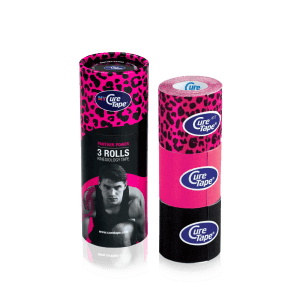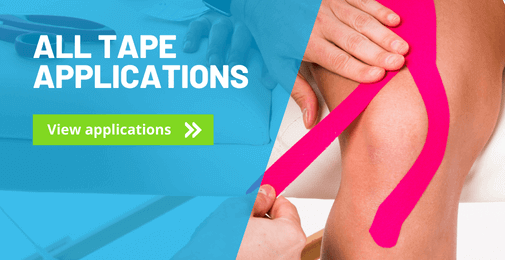The anterior tibial muscle (tibialis anterior) is located on the anterior-posterior side of the calf and runs over the tibia to the inner side of the ankle and ends on the inner side of the midfoot. This muscle is also known as the “foot lifter”, which is its main function. By tightening the foot, this muscle supports the walking movement. Unusually long walks or running long distances can lead to an overload of the muscle. Lifting the foot is painful and the muscle is very sensitive to pressure. When overloaded, this muscle is too tense. When this muscle is too weak, a “clubfoot” will occur.
How to tape shin complaints
Tips for a good shin taping application:
- Is the cause of the complaint or pain clear?
- Check if there any contraindications for not taping.
- Before you start taping, carefully read the instructions.
- Choose a colour of tape, any colour that fits your mood!
- Round of all the edges to prevent peeling.
- Do not stretch the tape at the beginning and the end.
- Rub the tape well for adhesion. Heat activates the adhesive layer.
- Showering or swimming is possible, pat the tape dry after it gets wet. Do not rub it hard.
- It is easier to remove the tape with body or massage oil.

Christina’s advice when taping your shin
In the self-taping instructions, I have chosen taping applications that are easy to apply yourself. In order to make this treatment safe, I give practical tips, which you should take into account before, during and after a tape treatment. They are based on my years of practical experience. If the complaints persist, always consult a therapist or doctor.
Instructions
Tape
Shape:I-Tape.
Number of strips: 1.
Technique: muscle tape (slight tension).
Measuring and cutting the tape
Step 1:

- Sit on a chair with the painful leg slightly bent.
- Measure the length of the tape from the sole of the foot diagonally across the ankle to the outside of the knee.
Applying the tape
Step 1:
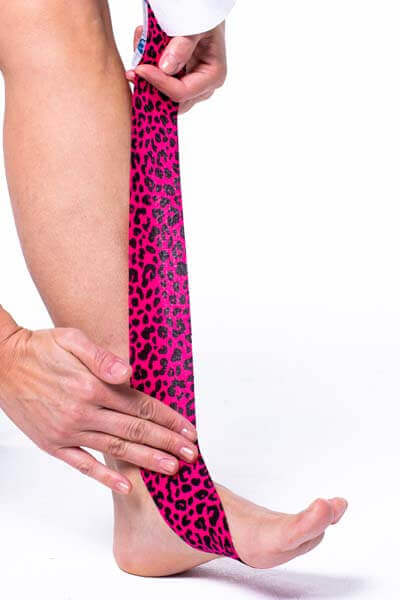
Step 2:
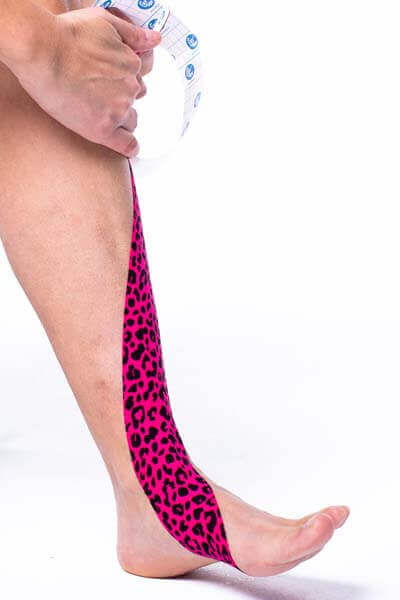
Step 3:
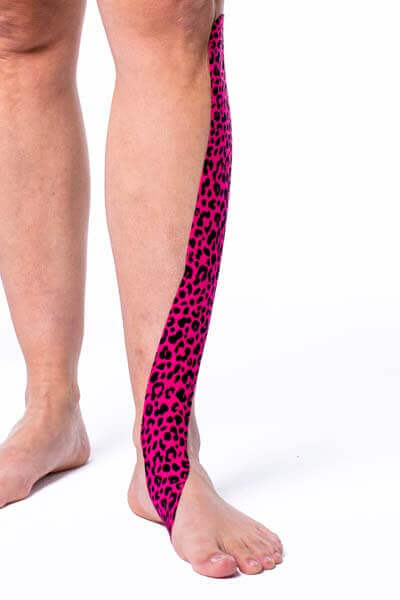
- Place the base under the ball of the big toe of the foot without stretching.
- Stretch the knee slightly and guide the tape with a slight stretch diagonally across the top of the ankle to the outer edge of the tibia.
- Follow the outer edge of the shin with the tape upwards and finish on the outside of the knee.
- Rub the tape on well.
Instruction in case of clubfoot
If the anterior tibial muscle does not cooperate properly anymore, there is a foot lift weakness, i.e. the foot can only be lifted insufficiently or not at all (“club foot”). In this case, apply the tape in exactly the opposite way. You start with applying the tape on the outside of the knee and end under the big toe. This application activates and supports the muscle.
Popular products to tape your foot
-
MYCureTape® – 3 Rolls Kinesiology Tape – Value Pack
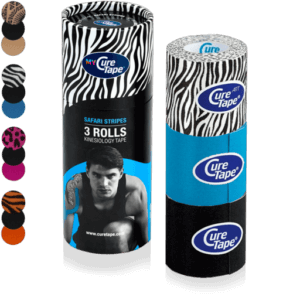 $26.95
In stockSelect options This product has multiple variants. The options may be chosen on the product page
$26.95
In stockSelect options This product has multiple variants. The options may be chosen on the product page -
Book: The Ultimate Kinesiology Taping Guide
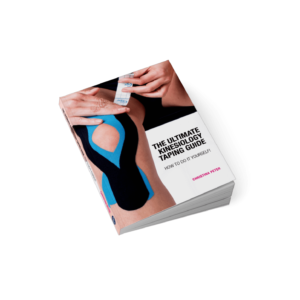 $29.95
In stockAdd to cart
$29.95
In stockAdd to cart -
CureTape® Ultimate Self-Tape Starter Kit
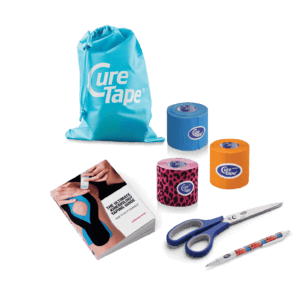 $87.95
In stockAdd to cart
$87.95
In stockAdd to cart
Learn how to tape
- 30 taping instructions for common injuries that taping can help you with
- 176 pages of clear written instructions
- 200 step-by-step instructions accompanied by photo’s, illustrations and scannable video’s through QR codes
What are you waiting for? Order your copy today!
*This book is intended for people who want to tape an injury or complaint themselves. If uncertain about the complaint, consult a physiotherapist.
THYSOL is the manufacturer of the kinesiology tape brand CureTape. As CureTape, we have been training and supplying professionals for almost 25 years. And consumers now know how to find us too! By manufacturing all our tapes in our own factory, we can guarantee the best quality!
Please note that the indicated tape applications and information on our website about the possibilities with kinesiology tape have not yet been scientifically proven. The statements and examples mentioned are based on long-term experiences of patients and trained therapists.
Contraindications not to tape: pregnancy, open wounds, broken bones, unexplained complaints, allergies and skin diseases, use of medication such as blood thinners, thrombosis and fever. Always apply tape in consultation with a specialist.

